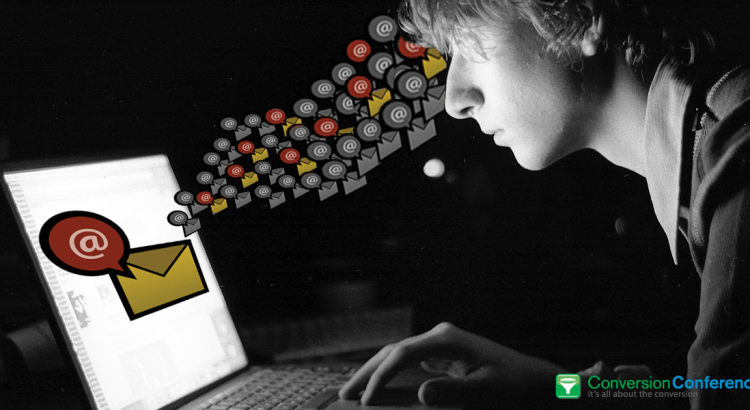Email overload and inbox fatigue are all too real. But, we all have an “inner circle” of emails we look forward to reading — you know, the ones we check our spam folders for when we haven’t seen them recently.
How can you get your emails into that coveted inner circle and — better still — keep them there to increase engagement and deliverability?
Let’s explore three simple ways to do that, with an outstanding email example for each one.
1. Build Momentum From The Welcome Email(s)
The welcome email (or email series) is one of the most undervalued tools in the email marketer’s bat utility belt.
Many brands are still sending a simple “Thank you for signing up!” email without a powerful call to action or great content that makes an immediate, lasting impression. This is a huge missed opportunity.
Let’s look at a welcome email from Social Triggers that starts building a strong relationship right away:

Why It Works
There’s a reason Derek Halpern has established such a prominent brand for SocialTriggers.com: he pays close attention to his audience and uses email effectively, starting right from the opt-in sequence.
The welcome email above uses a direct, one-to-one tone. There’s no distancing the brand from the person, and it goes even further — specifically asking new readers to connect with him on Twitter and Facebook. This is accomplished not with small icons in the footer, but with light copy and two simple text link calls-to-action.
My favorite idea from this email is the four-question feedback survey. Halpern asks for location, which helps with segmenting email lists for local events; but, the question that has the biggest impact is #4: “Tell me a little about yourself. What type of business do you run? What company do you work for? What’s the one thing you think I should know about you?”
As the SocialTriggers email list has grown dramatically, he’s received thousands of valuable responses to that question. That data not only helps drive the content for the site, but it lets readers know they’re being listened to because they see their responses reflected in the site and in email content.
Think of the impact a small change like that could make to your email and site content!
2. Stand Apart With Value, Personality & WIIFM
There’s a fine line between talking with your readers and talking at them. It’s one of those “know-it-when-I-see-it” factors. But, since we see it all the time, the emails which get the tone just right stick out in our minds.
Much of it comes down to service: are you genuinely trying to help me meet a need or desire, or are you simply trying to pitch me something?
We all have our “what’s in it for me” (WIIFM) threshold, and it’s climbing higher all the time for us as email recipients. However, that’s easy to forget when we’re in the email producer seat, scrambling to hit our conversions, list growth and revenue goals.
One brand that hits the right notes with email, from its welcome series (pictured below) to its personality-driven updates is Raven Tools.

Why It Works
This email, which is part four of a five-part welcome series, is full of WIIFM and value, starting with the subject line: “Step 4: Build reports in minutes, not hours.” Is that a feature? No, it’s abenefit – you’re saving me time and making my job (and life) easier. Of course, I want to open that email!
The body keeps that approach going throughout, with a personal angle: “Isn’t it exciting? By this fourth lesson in our five-part series, we hope you’re really seeing how Raven can save you time and make you money.”
Below that, a video on the reporting engine features the following caption: “Watch What Raven Reports Can Do for You.”
Raven gets bonus points for using real employee names in the “From” field. Plus, those status indicators below the main content block set our expectations throughout the series, making it easy to determine if we’ve missed an email or we want to skip ahead. This reader-first approach to design and usability also renders nicely on mobile devices.
If you’re trying to encourage readers to start using your product or service and connect with your brand, test a short welcome series like this (or tweaks like this if you have a series already).
With compelling content and a tone that underscores the benefits and value readers can expect from that content, you can expect higher response rates and ward off the negative effects of low engagement.
Conversion Conference has evolved into Digital Growth Unleashed!
Create the most compelling end-to-end customer experiences. Attract, persuade, serve, and the technology to make it happen – we’ve got you covered with four parallel breakout tracks! Plan early and get the absolute lowest rates possible for May 16-17, 2018 at the Mandalay Bay Casino & Resort, Las Vegas.
3. Share The Spotlight With Your Audience
“You can make more friends in two months by becoming interested in other people than you can in two years by trying to get other people interested in you.” – Dale Carnegie
You don’t argue with Dale Carnegie. He wrote the book on winning friends and influencing people decades before email came along, but the timeless relationship lessons fit email perfectly.
Yes, email is a channel for generating awareness, leads and sales. But, as social media has shifted the way we interact with brands online, we expect more of an interactive, personal touch from companies in email as well as social. As readers, we want to see ourselves; so, as producers, we need to turn the spotlight on our readers to deliver that.
There are plenty of ways to put your audience first, and you can find many examples in emails from 60 Second Marketer (pictured below).

Why It Works
This newsletter regularly includes content featuring guest contributors like the post, “25 Top Social Media Tips from Our Community,” that was drawn from a crowdsourced request to email readers. The post and email announcing it also prominently promoted the contributors’ names and links. Guest webinars and podcasts, free ebooks from partners, and other co-marketing content round out this newsletter’s typical mix.
Whether it’s customer success stories, guest contributors, or rewards for readers, this approach is by no means rocket science. Showcasing content from contributors is the lifeblood of countless prominent sites, and can produce massive email list growth (e.g., a 234% gain in one year).
That said, knowing this and applying it consistently isn’t the same thing. When you habitually feature ideas, wins and lessons from your customers, it resonates with other readers because, framed properly, that content tends to reflect their own situation. Plus, it strikes an aspirational chord when readers see that they, too, could be featured.
This customers/community-first approach is a key factor in the 60 Second Marketer newsletter’s solid engagement rates and list growth. What are some ways you could apply this approach with your readership?
Bonus Tip: Check Your Frequency
Even though many webmail clients are getting smarter at handling the inbox assault we all face (hello, Mailbox app), as email marketers, we need to take real steps to do our part. One such step is rethinking frequency.
You’ve probably seen the recent praise for Fab.com’s automatic opt-out for unresponsive customers, which can backfire in a good way and provide an unexpected “wow” moment that gets customers back on board.
Just recently, one of my favorite emails, Crazy Egg’s The Daily Egg, let us readers know they’re scaling back from a daily to a weekly roundup. And, perhaps offering frequency options at sign up could catch on as we marketers explore ways to align our timing with our readers’ preferences.
What all of these ideas have in common is putting our customers’ needs first and trusting that the numbers we want will follow. It’s not always an easy concept to get comfortable with, but time and again, we see proven examples in action. So, what are you waiting for? Let’s get testing!
Are you using some or all of these approaches now? If not, are you ready to test any of them? Share your thoughts in the comments.
This article originally appeared on MarketingLand.
About the Author
 Hunter Boyle leads business development for email marketing powerhouse AWeber. A seasoned speaker, content marketer, and recovering introvert, Hunter’s been helping organizations optimize their digital initiatives since the dot-com days. The former editor of Marketing Experiments Journal and Internet Marketing Report, outside the office, he’s also an avid traveler, photographer, volunteer and craft beer lover.
Hunter Boyle leads business development for email marketing powerhouse AWeber. A seasoned speaker, content marketer, and recovering introvert, Hunter’s been helping organizations optimize their digital initiatives since the dot-com days. The former editor of Marketing Experiments Journal and Internet Marketing Report, outside the office, he’s also an avid traveler, photographer, volunteer and craft beer lover.

 717 798 3495
717 798 3495



